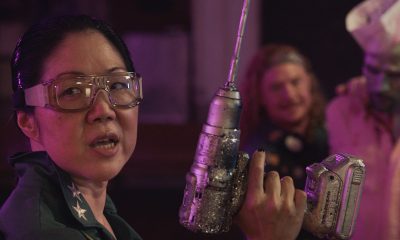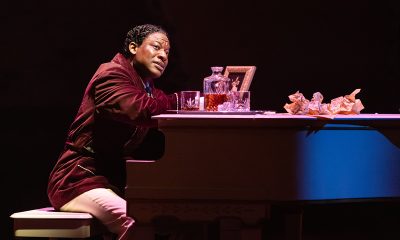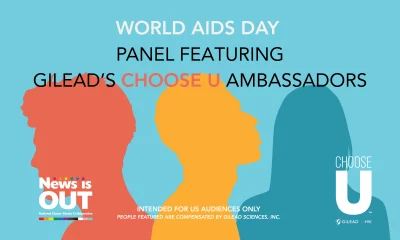a&e features
Catching up with Michael Feinstein
Out crooner headlines Strathmore Gala this weekend
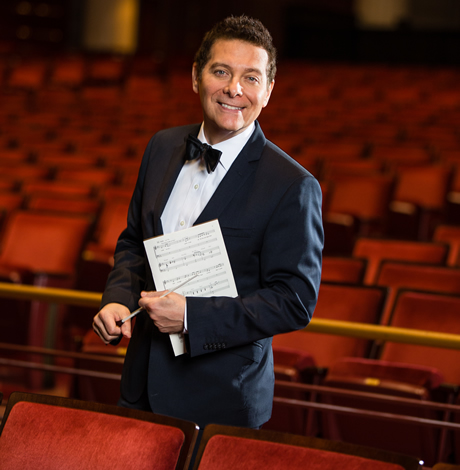
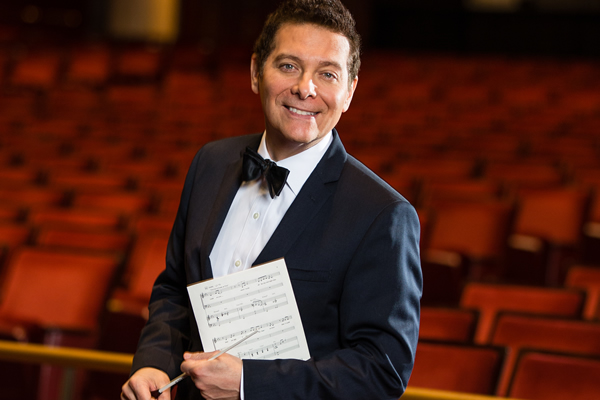
Michael Feinstein says the Strathmore is one of the country’s great music halls. He’ll be there this weekend. (Photo by Julia Duresky; courtesy Strathmore)
Strathmore Spring Gala
Saturday, May 12
Michael Feinstein in concert
Cocktails, 5 p.m.
Three-course dinner, 6:15Concert, 9 p.m.
Gala patron tickets: $1,250
Concert only: $45-130
Music Center at Stratmore
5301 Tuckerman Lane
North Bethesda, Md.
strathmore.org
Great American Songbook stalwart Michael Feinstein is at the Strathmore this weekend to headline its annual Spring Gala.
On Saturday night, the long-out crooner will sing along with Broadway singer Laura Osnes and several alums of the Strathmore’s artist-in-resident program.
The gala is a capstone event in the Strathmore’s year-long programming partnership with Feinstein in which they’ve collaborated to “spotlight torchbearers of Great American Song.” Feinstein spoke to the Blade by phone this week from his home in Indiana. His comments have been slightly edited for length.
WASHINGTON BLADE: How is 2018 treating you?
MICHAEL FEINSTEIN: Really great in some ways and in other ways, not so great. I broke my nose in January and I had a hemorrhage on my vocal cord but that’s all in the past and I’m feeling hale and hearty so I like to think I got through the most dramatic part and the rest should be smooth sailing.
BLADE: How did you break your nose?
FEINSTEIN: I walked into an impeccably polished plate of glass.
BLADE: Vocal cord stuff is really scary for a singer. Are you any worse for the wear?
FEINSTEIN: Evidently not. I did a symphony concert yesterday and two of my Lena Horne shows at Lincoln Center and everything seems to be full steam ahead so I’m very grateful and lucky I guess. All is good.
BLADE: What do you have planned for the Strathmore?
FEINSTEIN: It’s gonna be a fun night because, of course, it’s their gala and I love being associated with the Strathmore because it’s such a great venue to perform in. … The program will be with a 17-pice big band and the musical director is Tedd Firth who is one of the great jazz pianists and arrangers of our time. So it’ll be a celebration of American popular song including, of course, some Gershwin and then I’m gonna do a Sinatra medley that’s just a swinging, fun thing. Then Laura Osnes is a special guest. She’ll be doing some songs and we’ll be doing a duet together …. so it’ll be a fun, celebratory, rich musical experience I think.
BLADE: Why do you work to find young people to take up the cause of American standards? To your knowledge, does anything like that happen in other genres of music?
FEINSTEIN: Well, for a number of years I’ve been mindful of the fact that any art or music only stays alive if there are audiences for it and people who are educated in it and people who bring it to the attention of others and because we live in a time when there is so little arts education in schools, it’s up to all of us who care about it to do what we can to preserve it and bring it to the next generation. … The arts are incredibly transformative. They change our lives and it’s an essential part of what makes life livable.
BLADE: But why do some genres need this more than others? You think of Motown or any classic rock and nobody really has to work to keep it alive. Are you aware of similar efforts for polka or Dixieland or any other type of music more popular in yesteryear?
FEINSTEIN: Well certainly the American songbook needs it because the more people who learn about it, it becomes part of their lives and they’ll share it with others. A lot of contemporary artists do American songbook songs in their sets. It’s not like it exists in a vacuum. I remember when Lady Gaga sang “Someone to Watch Over Me” on a show. Many artists sing these songs and many thousands of artists have sang “Summertime.” So to me it’s always about making people more aware of it.
BLADE: You’ve done so many albums. Which was the hardest to sequence?
FEINSTEIN: It’s always challenging because you have a bunch of songs and then you have to think about which order makes the most sense. I like to think of it like telling a story like a play or a movie. It can be tough but I don’t remember one being especially more difficult than another. I’ve made many different types of albums and they all present their own challenges.
BLADE: Does sequencing sometimes affect arrangements and transitions?
FEINSTEIN: Absolutely. There are times I’ve changed the beginning of a track or cut part of it or extended it. Also the time between tracks is significant, but of course a lot of people don’t listen to music sequentially anymore, they pick and choose in whatever medium they use so … in some ways it’s a lost art.
BLADE: Do you keep in touch with Cheyenne Jackson? Have you seen any of his TV stuff? (Feinstein and Jackson released a duet album in 2014)
FEINSTEIN: Yes, I am in touch with Cheyenne. We performed together about, oh, four-five months ago and he wants to do more musical performances but his acting career keeps him well occupied. He’s a wonderful human being and Jason, his husband, as well. They’re a great couple and he’s a major talent. He’s one of the finest voices of our time. He’s got extraordinary range and versatility and, of course, charisma. He’s deeply gifted and just a nice person to be around.
BLADE: When we last spoke in 2015, you mentioned a multi-CD project you were working on but couldn’t say much about. What was that and is it still in the works?
FEINSTEIN: I was working on recording the complete songs of George Gershwin, which is like 800 published songs, and that’s what I was starting to embark on. … We decided against it for various reasons. … The more we explored it, the more we realized it was more interesting as an idea than it would have been in execution. But I’m doing a Gershwin country duets album now and it’s very exciting. Right now I’m working on a track with Dolly Parton and we’re going to be doing a track soon with Brad Paisley and that’ll be tremendous fun to put together.
BLADE: How often do the holy grails in your genre turn up? Is it fairly uncommon?
FEINSTEIN: Well things do turn up from time to time. (There are) Bing Crosby/George Gershwin demos from 1930 or 1931 that have never turned up but they might. I know of the existence of one Gershwin recording that I haven’t been able to get my hands on yet but I’m working on it. And sometimes things turn up that we didn’t even know existed, which is fun. I recently found some other Crosby recordings that were fun to discover from radio and a number of years ago, I discovered a bunch of lost Crosby tracks. Actually I’m a trustee of the Judy Garland estate and I just found about a dozen recordings of her from the 103-s that were part of her own record collection that were pretty extraordinary performances that, for the most part, have never been heard. So now the trust is figuring out the best way to release them. … But it’s always thrilling to find things like that.
BLADE: You’ve talked about rescuing scores from dumpsters. How did you happen to be in the right place at the right time?
FEINSTEIN: I have to ascribe it to karma or luck or fate, if you will. I had the experience a number of times of stumbling upon something right before it was slated for destruction even though my timing sometimes has been off. A couple years ago, I just missed gaining possession of an entire office full of music. When I went to collect it, I was told it been destroyed the day before. So my timing hasn’t always been perfect.
BLADE: Why was Hollywood so cavalier with its history years ago?
FEINSTEIN: Because the thing that mattered to Hollywood was the film itself, not the ancillary products such as scores or whatever was used to make the finished film. They didn’t understand the importance or value of the music so it was jettisoned. There are very few studios that kept their scores. Warner Brothers did for the most part. Fox kept a lot of them and Paramount did but the big destruction, of course, is MGM thanks to a man named James Aubrey who very specifically destroyed those assets and many others. They’re businesses, not museum or archives. They don’t exist to preserve, they exist to make money and if they don’t make money from something, they don’t consider it valuable, not understanding that there was not only financial value in these things but also cultural and historical value. … But that’s the way of the world.
BLADE: Is it possible to recreate a score from a recording? Is that even a thing?
FEINSTEIN: It does work but only if the person doing it has the expertise to accomplish it. There are people who’ve done it and done lousy jobs. Then there’s people like John Wilson in England who with a couple associates has impeccably restored scores that are exact. But the number of people on the planet who can do that is extremely limited. Probably no more, and I’m speaking generously, than five or six. … It’s possible but it’s very difficult.
BLADE: It has ebbed, but there was a period where many pop artists — Joni Mitchell, Cyndi Lauper, of course Rod Stewart — were releasing standards albums. Did you hear very many of them? Which was your favorite?
FEINSTEIN: I liked some of the arrangements on Joni Mitchell’s (“Both Sides Now,” 2000). I remember years ago, Annie Lennox did an album on which she recorded a Harry Warren song called “Keep Me Young and Beautiful” from 1932 (on 1992’s “Diva”). I actually think it’s more fun to discover an old standard in the midst of a pop album. Like I remember as a kid, I discovered this Steely Dan album “Pretzel Logic” and on it was a song called “East St. Louis Toodle-Oo,” an instrumental, which it wasn’t until years later that I discovered they did it on guitar and pop instruments but it was an exact copy of a 1928 Duke Ellington recording. So that’s always a kick.
BLADE: You met so many cool people of the 20th century. Did you ever by chance meet Kate Smith and how do you think her recordings of the standards have held up?
FEINSTEIN: Kate Smith is one of the great underestimated singers from today’s perspective. She was a dazzling talent. I did not meet her but she had a unique and formidable legacy because she was such a huge star on the radio going back to the 1930s and she had a tremendous recorded output that started in 1926 and ended 50 years later. She could sing just about anything and when she started making pop records in the ‘60s, mainly with Peter Matz, who was at the same time working with Barbra Streisand, some of them were great and some were mawkish because some of the more psychedelic songs didn’t translate well to her. But when she took some of the Broadway material, she was incomparable. Like her recording of “If He Walked Into my Life” from “Mame” is fantastic. Her recording of “What Kind of Fool Am I” from her live Carnegie Hall album is dazzling. If you watch on YouTube some of her TV appearances from the ‘70s, she sings a lot of these songs tremendously well. One of my favorites is “You and Me Against the World,” which is like a three-act play the way she sings it. It just tears your heart out.
BLADE: Why do some great figures from those years — Garland, Elvis, whomever — hold up, yet people like Kate Smith is a good example, who were equally well known at the time, you mention them to a millennial and you get a blank stare?
FEINSTEIN: Well, you know, Garland and Presley had volatile and tragic lives. A lot of people you mention Judy Garland, they say, “Oh, she was such a mess.” A lot of people who know the name, don’t necessarily know anything about her art.
BLADE: So you’re saying we have a macabre fascination with tragedy and somebody who had a nice, stable life, for whatever reason, that doesn’t capture the public imagination nearly so well?
FEINSTEIN: Sort of, yes.
BLADE: How do you like the acoustics at the Strathmore?
FEINSTEIN: Oh, it’s sensational. It really is one of the great performing venues. That’s something that really cannot be planned. Of course there’s a multi-million dollar industry of acoustic science but even with all that, there’s another unknowable factor. … I’ve been in brand new buildings that are supposed to be state of the art and they just don’t work. The Strathmore has the gratifying combination of being tremendously opulant and beautiful and comfortable and it creates a connection for the audience and the performer that’s unique and special. It’s a real jewel and a place to be treasured.
BLADE: What’s the gayest tchotchke or memento in your home?
FEINSTEIN: Oh golly. Well, there are so many, how do you choose? (laughs) I have a lot of Judy Garland mementos and I have things from Liza. Let me think. When Terrence and I got married (in 2008), which was in our home, Liza went into my office, which is in my house, and on one of the doors it has a name tag that says Mr. Feinstein that I probably took from a dressing room, so it’s on a closet door and it looks like an entrance to a room. She wrote on it “not anymore” and her name and the date. I said, “What’s that?” And she opened the door and said, “Don’t you get it? In the closet — not anymore,” because that was the date of our marriage. I guess that would be pretty gay.
a&e features
Have yourself a merry John Waters Christmas
Annual holiday show returns to Alexandria and Baltimore
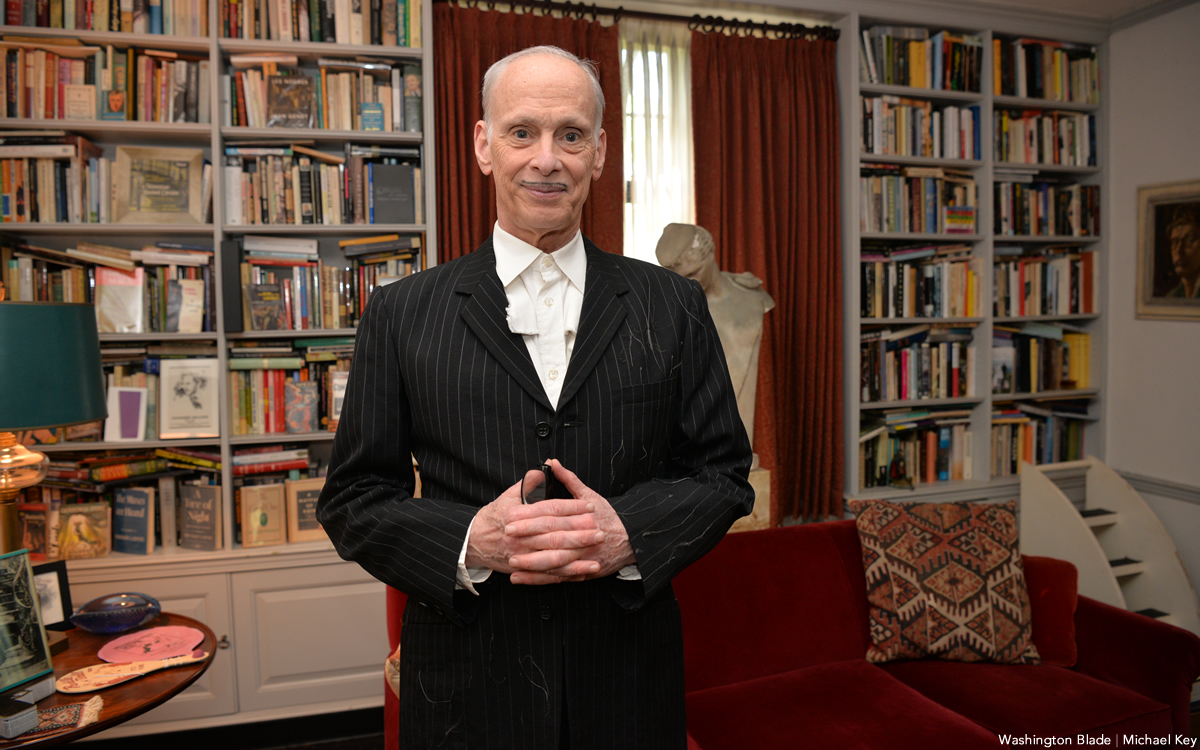
When it comes to iconic Christmas scenes in movies, none can top the tree-toppling tantrum thrown by cha-cha heels-deprived Dawn Davenport in John Waters’s fifth full-length feature “Female Trouble” from 1974. Therefore, it’s not surprising that Waters continues to make art out of Christmas, performing his spoken word Christmas tour in cities across the country. Waters has even more reason to celebrate with the release of his new red vinyl 7” single, a cover of Little Cindy’s “Happy Birthday Jesus (A Child’s Prayer)” on the A-side, and “A Pig Latin Visit From St. Nicholas” on the B-side. If you’re still looking for unique Christmas gifts, consider this record. As always, John was kind enough to make time for an interview in advance of his tour dates.
BLADE: John, in preparation for this interview with you, I went back and listened to Little Cindy’s original rendition of “Happy Birthday Jesus (A Child’s Prayer)” on your “A John Waters Christmas” CD.
JOHN WATERS: One thing I did, if you notice, I make the same stumble in my recording that she did in the original.
BLADE: It sounded to me like she got choked up.
WATERS: No, I think she just stumbles over a word, so I stumbled over the same word. It’s appropriation, insanely.
BLADE: Is this a song you first became aware of in your youth or when you were an adult?
WATERS: When I was doing the Christmas album, I had this friend named Larry Benicewicz. He was kind of my idea man with music. He knew every single old record. I would say to him, “Weird Christmas songs,” when we were doing a soundtrack, or a song about bears, or a song about this, and he would give me all these tapes. It was one of the ones he played for me. A lot of the songs I put in my movies and on my records, I did know as a kid. I did not know this one, but I immediately embraced it. I don’t think it’s campy. I think it really is spiritual in a weird way. My doing it makes it a novelty record. I am really for novelty records, and there aren’t any anymore. Why was there not a COVID novelty record? That’s insane. The dance “The Bug” that’s on the “Hairspray” soundtrack would be perfect for COVID.
BLADE: The thing that struck me was that for a Christmas song in the voice of a child, a kind of death pall hangs over it, with lines like, “If I was good you’d let me live with you” and “they nailed you to the cross, they wanted you to die.”
WATERS: All of it! When I see children at midnight mass kneeling in front of a nude man nailed to a cross, I feel like I’m at The Eagle! It is S&M, it’s creepy. I took the same cover (photo) from her record to parody and put my face on it. The same thing I did with The Singing Dogs last year when I covered (their version of) “Jingle Bells.” I’m really into novelty records. I love them and I’m trying to bring them back. I don’t expect anybody to ever play these records. Even The Singing Dogs one said on it, “Please do not play this record” [laughs]. And the flipside, the Pig Latin version, is almost impossible to listen to.
BLADE: I’m so glad you mentioned that. “A Pig Latin Visit From St. Nicholas” reminded me of the lost art of speaking in Pig Latin. I also recall watching the PBS series “Zoom” as an adolescent and learning to speak “ubbi dubbi,” a distant relative of Pig Latin. Do you think that the time is right for a Pig Latin or ubbi dubbi revival?
WATERS: Here’s the thing, I never could pick up any language, except Pig Latin. I’ve been in every foreign country. Foreign countries have given me money to learn to speak the language. I can never do it! But Pig Latin…my parents and other parents in the ‘50s spoke Pig Latin so kids couldn’t understand what they were saying. Then my mother taught it to me, and I used it. The hardest take to shoot in “Pink Flamingos” was not eating the dog shit. It was when the cast skipped, in one take, saying “E-way, are-yay e-they ilthiest-fay eople-pay in-hay e-they ole-hay ide-way orld-way.” We’re the filthiest people in the whole wide world in Pig Latin. We had to do so many takes so they could do it once without screwing it up. In “Polyester,” Edith (Massey) answers the phone, “ello-hay.” I did a photo piece where it was all subtitled in Pig Latin. Like “osebud-Ray” (from “Citizen Kane”) or in “Streetcar,” “ella-Stay!” [Laughs] All the iconic dialogue translated into Pig Latin. My assistant who helped me do it, had never heard of Pig Latin. She really got good at it because she lived in many foreign countries and can pick up languages. But it’s not that easy to do it correctly and read it. Your computer will translate into Pig Latin.
BLADE: AI understands Pig Latin?
WATERS: I guess that’s AI. It wasn’t 100% right, but it was close. I can speak it if I look at it, but just do a bit at a time. It was a challenge that no one would possibly care about or want to do.
BLADE: I think you pulled it off very well.
WATERS: If you want people to leave on Christmas morning, you put it on. That’s how you get your guests to leave. It’s time to go.
BLADE: Ood-gay i-bay! How did your relationship with record label Sub Pop, which released 2021, 2022, 2024, and new 2025 holiday singles, come about?
WATERS: I believe the first thing I did for them was “Prayer to Pasolini.” They came to me through Ian Brennan. He’s won a couple Grammys for World Music, but he is also is one of my agents who does the Christmas tour and a lot of my shows, anything with music. He helped me arrange each one of the songs. He had a relationship with Sub Pop. It was perfect. My friends in Baltimore, (the band) Beach House, have had huge success.
BLADE: That’s right, they’re on Sub Pop!
WATERS: Yes! I’m happy to be on it. I’ve even been to the warehouse and posed for pictures like Jackie Suzanne used to do.
BLADE: Is there any chance that “A John Waters Christmas” might be reissued on vinyl by Sub Pop?
WATERS: No. It’s such a nightmare to get the rights and to renew them. You have to find the publisher and the writer, and they usually hate each other. It doesn’t matter if it’s obscure or famous, it’s hard to get. You have to make the deal. The singer doesn’t get anything unless they play it on the radio. It would be so complicated legally, and there would be such a [laughs] tiny audience for it. I hope it will come out again. The same thing with the one for Valentine’s Day. I had two of them that did quite well when they came out; “A Date With John Waters and “A John Waters Christmas.” The “John Waters Christmas” album is still the soundtrack that plays whenever I’m doing my spoken word Christmas show as people are entering the theater.
BLADE: Aside from your annual Christmas show tour, what else do you do for the holidays now, and are there any traditions that you’ve carried over from your family?
WATERS: Certainly! I have two sisters, my brother’s widow, and me, so there are four and we take turns each year to have the Christmas dinner. Mine was last year. An entire sit-down dinner. Mom’s China, the silverware, the entire full dinner. It’s pretty traditional. I don’t have a Christmas tree, but I do decorate the electric chair from “Female Trouble.” That is a tradition in my family. We do have Christmas decorations, but they’re usually weird ones that fans sent me. I have one with Divine knocking over the Christmas tree, and the Christmas tree lights up, all sorts of amazing things. There is definitely a tradition here that might be a little altered, but it is definitely a tradition. I used to have a giant party every year, but COVID ended that. I still wouldn’t want 200 people in my house breathing right now.
BLADE: I was looking at your tour schedule and wondered if there are any new cities in which you’ve never performed the John Waters Christmas show that have been added to this year’s schedule?
WATERS: I don’t think there’s a city in America in which I haven’t done one show! The only places I haven’t been to are Hawaii and Alaska. I could do it there, but it’s too long on a tour. I can’t think of a city I haven’t played in in America over the last 50 years. The Christmas show is completely different every year. It doesn’t matter if you saw it last year.

Some gifts scream practical, others whisper luxury, and a few flat-out blur the lines. From cocoa that feels ceremonial to a cologne that linger like a suggestive smirk, this year’s ultimate gift picks prove that thoughtful (and occasionally naughty) presents don’t have to be prosaic. Welcome to your holiday cheat sheet for festive tangibles that get noticed, remembered, and maybe even result in a peck of gratitude planted under the mistletoe. Consensually, of course.
Amber Glass Champagne Flutes
Pop the champs – but make it vintage. These tulip-shaped stunners in amber-tinted glass bring all the Gatsby vibes without the Jazz-age drama. Whether you’re toasting a milestone or celebrating a Tuesday, their seven-ounce capacities and hand-wash-only care make ‘em as practical as they are pretty. Pair with a thoughtful bottle of bubs and gift with a glittering wink. $18, NantucketLooms.com
Disaster Playbook by Here Comes the Apocalypse
Because the end of the world shouldn’t be a solo act, this spiral-bound guide is your step-by-step roadmap to surviving and thriving when everything else goes sideways, which might be sooner than you think. Packed with checklists, drills, and a healthy dose of humor, it’s like a survival manual written by your most prepared (and slightly snarky) friend. Whether you’re prepping for a zombie apocalypse or, more realistically, REVOLUTION!, this playbook’s got your back. $40, HereComesTheApocalypse.com
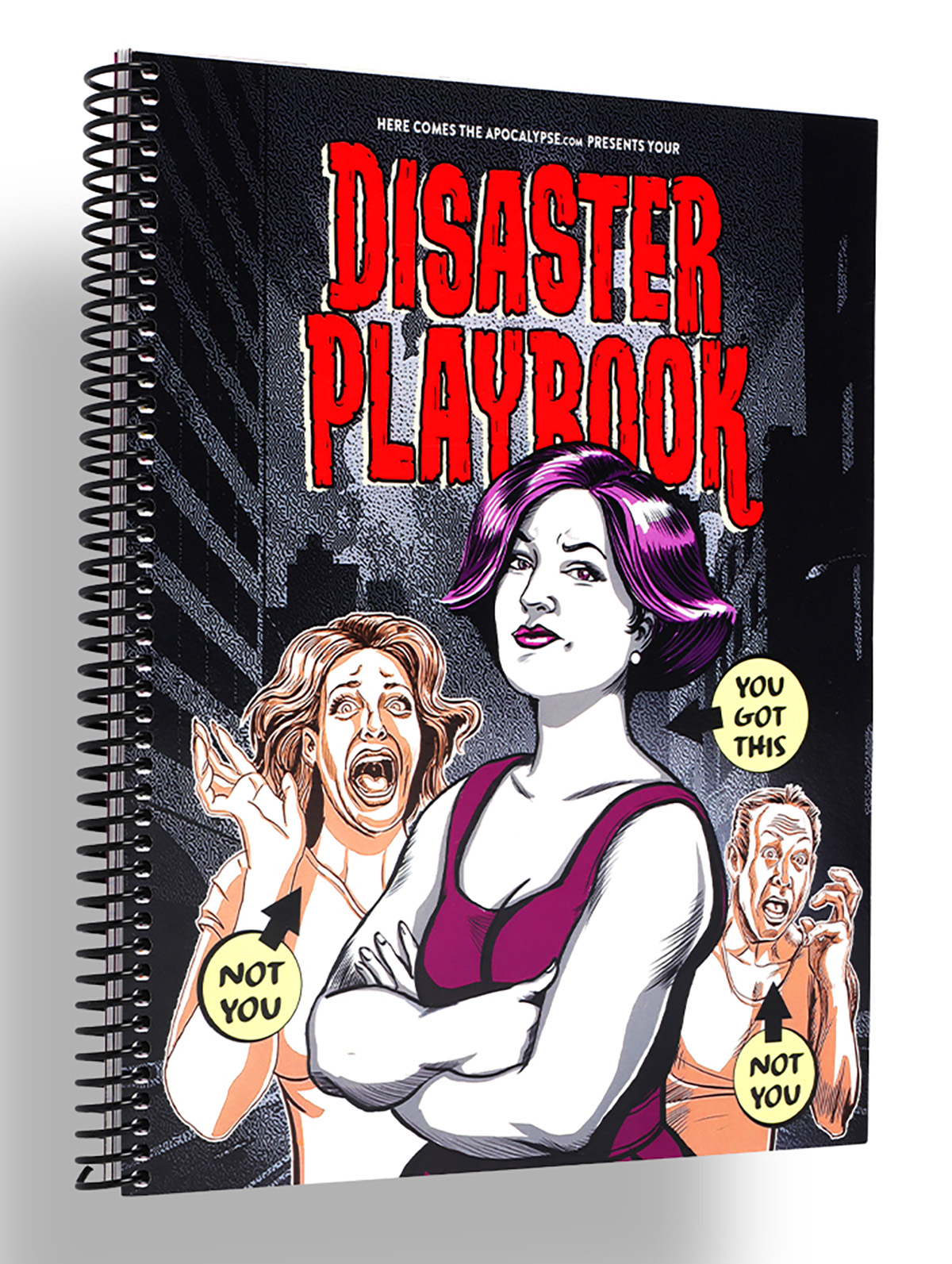
Wickless Vulva Candles
Bold, luxurious, and completely flame-free, CTOAN’s wickless candles melt from beneath on a warmer, releasing subtle, sophisticated fragrances, like sandalwood or lavender. The vulva-shaped wax adds a playful, provocative element to any space –perfect for a bedroom, living room, or anywhere you want elegance with an edge. A gift that celebrates form, intimacy and self-expression, no fire required. $39, CTOANCO.com
Villeroy & Boch Royal Classic Christmas Collection
Every meal is a mini celebration – with whimsy at every place setting – in Villeroy & Boch’s Royal Classic festive dinnerware collection that hits all the right notes. Made from premium German porcelain, it features nostalgic little toys, nutcrackers, and rocking horses in delicate relief, giving your holiday spread a playful but refined twist. Dishwasher- and microwave-safe, it’s luxe without the fuss. Gift a piece to a special someone, or start a collection they’ll use (and show off) for years to come. $22-$363, Villeroy-Boch.com
Greenworks Electric Lawnmower
You a ’hood queen who considers lawn care performance art – or just wants to rule the cul-de-sac in quiet, emission-free glory? Greenworks’ zero-turn electric mower has the muscle of a 24-horsepower gas engine but none of the fumes, drama or maintenance. Six 60V batteries and a 42-inch deck mean you can mow up to two-and-a-half acres on a single charge – then plug in, recharge, and ride again. It’s whisper-quiet, slope-ready, and smooth enough to make you wonder why you ever pushed anything besides your queer agenda. The perfect gift for the homeowner who loves sustainability, symmetry, and showing off their freshly striped yard like that fresh fade you get on Fridays. $5,000, GreenworksTools.com
Molekule Air Purifier
For the friend who treats their space like a sanctuary (or just can’t stand sneezes), the Molekule Air Pro is magic in motion. Covering up to 1,000 square feet, it doesn’t just capture allergens, VOCs, and smoke – it destroys them, leaving your air feeling luxury-clean. FDA-cleared as a Class II medical device, it’s serious science disguised as modern design. Gift it to your city-dwelling, pet-loving, candle-burning friend who likes their living room as pristine as their Instagram feed. $1,015, Molekule.com

Cipriani Prosecco Gift Set
Effervescent with stone-fruit sweetness and a touch of Italian flair, the Cipriani Bellini & Prosecco gift set brings brunch-level glamour to any day of the week. The Bellini blends rich white-peach purée with sparkling wine, while the dry ’secco keeps things crisp and celebratory. Pop a bottle, pour a flute, and suddenly winter weeknights feel like a party – even with your pants off. $36, TotalWine.com
Woo(e)d Cologne
British GQ recently crowned Woo(e)d by ALTAIA the “Best Date Night Fragrance,” and honestly, they nailed it. Confident without being cocky – smoky gaïac and Atlas cedarwood grounds the room while supple leather and spicy cardamom do all the flirting – it’s a scent that lingers like good conversation and soft candlelight. Gift it to the one who always turns heads – or keep it for yourself and let them come to (and then on) you. $255, BeautyHabit.com

Lococo Cocoa Kit
Keep the run-of-the-mill mugs in the cabinet this Christmas and pull out Lococo’s handcrafted Oaxacan versions that demand you slow down and sip like it matters. Paired with a wooden scoop, rechargeable frother, and Lococo’s signature spice hot-chocolate blend (vegan, gluten-free, with adaptogenic mushrooms), this holiday kit turns Mexi-cocoa into a mini ritual you’ll look forward to. Perfect for anyone who loves a little indulgence with a side of ¡A huevo! energy.
Manta Sleep Mask
Total blackout, zero pressure on the eyes, and Bluetooth speakers built right into the straps, this ain’t your mama’s sleep mask — but it could be. The Manta SOUND sleep mask features C-shaped eye cups that block every hint of light while ultra-thin speakers deliver your favorite white noise, meditation, or late-night playlist straight to your ears. With 24-hour battery life, breathable fabric, and easy-to-adjust sound, it turns any bed (or airplane seat) into a five-star sleep suite. Perfect for anyone who treats shut-eye like an art form (or just wants to escape their roommate’s late-night bingin’ and/or bangin’). $159, MantaSleep.com

Shacklelock Necklace
Turn the industrial-chic vibe of a shackle into a sleek statement. Mi Tesoro’s platinum-plated stainless-steel necklace sits on an 18-inch wheat chain, featuring a shackle-style latch pendant that’s waterproof, tarnish-free, and totally fuss-les. Beyond style, it nods to a classic gesture in the queer leather community: replacing a traditional Master lock with something elegant to quietly signal belonging to someone special. Wear it solo for a minimalist edge or layer it like you mean it; either way this piece locks in both your look and your intentions. $90, MiTesoroJewelry.com
Parkside Flask Mojave Edition
Wine nights get a desert glow-up with Parkside’s limited-edition 750-milliliter all-in-one flask draped in sun-washed bronze and badland hues like sage, sand, and terracotta – with magnetic stemless tumblers that snap on for effortless shareability. It keeps your vino chilled for 24 hours, pours without drips (no tears for spilled rosé, please), and even lets you laser-engrave your own mantra or inside joke. Perfect for picnics, surprise rooftop clinks, or gifting to your favorite wine (or desert) rat. $149, HighCampFlasks.com

Mikey Rox is an award-winning journalist and LGBT lifestyle expert whose work has published in more than 100 outlets across the world. Connect with him on Instagram @mikeyroxtravels.
a&e features
Meet Mr. Christmas
Hallmark’s Jonathan Bennett on telling gay love stories for mainstream audiences

Jonathan Bennett believes there are two kinds of people in the world — those who love Hallmark movies and liars. And in Season 2 of Finding Mr. Christmas, which the Mean Girls star co-created with Ben Roy, Bennett is searching for Hallmark’s next leading man.
“It’s so fun for people because everyone in their life has someone they know that they think should be in Hallmark movies, right? The UPS driver, the barista at the coffee shop, the dentist,” Bennett says. “So we’re testing their acting abilities, we’re testing who they are, but we’re also looking for that star quality — the thing that makes them shine above everyone else. It’s almost something you can’t explain, but we know it when we see it.”
Season 2’s cast includes a former NFL player for the Green Bay Packers, a few actors, and a realtor. The 10 men compete in weekly festive-themed acting challenges, one of which included having to ride a horse and act out a scene with Alison Sweeney. The contestants were chosen from a crop of 360 potential men, and Bennett gives kudos to the show’s Emmy-nominated casting director, Lindsay Liles (The Bachelor, Bachelor in Paradise).
“She has a tough job because she has to find 10 guys that are going to be good reality television, but also have the talent to act, carry a scene, and lead a Hallmark movie eventually,” he says. To be the right fit for a Hallmark leading man, Bennett singles out five key characteristics: you have to be funny, charming, kind, have a sense of humor, and you have to do it all with a big heart.
Of course, Finding Mr. Christmas wouldn’t be Finding Mr. Christmas without its signature eye candy — something Bennett describes as “part of the job” for the contestants. “I can’t believe Hallmark let me get away with this. I dressed them as sexy reindeer and put them in harnesses attached to a cable 30 feet in the air, and they had to do a sexy reindeer photo shoot challenge,” he says with a laugh. “This season is just bigger and bolder than last. People are responding to not only all the craziness that we put them through, but also comparing and contrasting the guys in their acting scenes when we do them back-to-back.”
Season 1 winner Ezra Moreland’s career has been an early testament to the show’s success at finding rising talent. On seeing the show’s first winner flourish, Bennett says, “Now to watch him out in the world, just booking commercial after commercial and shining as an actor and a model, I think the show gave him the wings to do that. He learned so much about himself, and he took all that into his future auditions and casting. He just works nonstop. I’ve never seen an actor book more commercials and modeling gigs in my life.”
Bennett has been a star of plenty of Hallmark movies himself, including the GLAAD-award-winning The Groomsmen: Second Chances, which makes him a fitting host. Among those movies are 2020’s Christmas House, which featured the first same-sex kiss on the network and had a major impact on Bennett’s career as an openly gay man. “Hallmark’s been so great about supporting me in queer storytelling. But again, I don’t make gay movies for gay audiences. I make gay love stories for a broad audience, and that’s a huge difference, right? We’re not telling stories inside baseball that only the gay community will understand.”
He continues, “The backdrop of a Hallmark Christmas movie is very familiar to these people who watch. And so when you tell a gay love story, and you tell it no differently than a straight love story in that space, they’re able to understand. It’s able to change hearts and minds for people who might not have it in their lives.”
While Hallmark has become a major staple of Bennett’s career, he started off wanting to be a Broadway actor. And before the first season of Finding Mr. Christmas aired, Bennett took a break from TV to make his Broadway debut in Spamalot, replacing Michael Urie as Sir Robin and starring alongside Ethan Slater and Alex Brightman.
“That was my dream since I was five years old – then I booked a movie called Mean Girls, and everything kind of changes in your life. You no longer become a person pursuing Broadway, you become a part of pop culture,” Bennett recalls. “And to be honest, when I hit 40, I was like, ‘I’m probably never going to get to live that dream.’ And that’s okay, because I got to do other dreams and other things that were just as cool but different. So I honestly never thought it would happen.”
Bennett is still determined to make his way back on Broadway with the right role — he calls Spamalot the “best experience” of his life, after all — but he’s got another Hallmark show lined up with Murder Mystery House, which he co-created. The show was recently greenlit for development and intends to bring the Hallmark mystery movie to life. “It’s kind of like our version of The Traitors,” Bennett admits.
Looking back on both seasons, Bennett says that what makes Finding Mr. Christmas stand out in the overcrowded reality TV landscape is that everyone involved makes it with heart: “This isn’t a show where you’re going to watch people throw drinks in each other’s faces and get into big fights. The thing that has amazed me so much about this show, the more we’ve done it, is that every season, 10 guys come in as competitors, but they leave as a family and as brothers. That’s something you don’t get on any other network.”
Finding Mr. Christmas airs every Monday on Hallmark through December 20, with episodes available to stream on Hallmark+.
-

 The White House5 days ago
The White House5 days agoAs house Democrats release Epstein photos, Garcia continues to demand DOJ transparency
-

 Virginia5 days ago
Virginia5 days agoDOJ seeks to join lawsuit against Loudoun County over trans student in locker room
-

 Photos4 days ago
Photos4 days agoPHOTOS: The Holiday Show
-

 Health4 days ago
Health4 days agoChoose U ambassadors share lived experiences with HIV, personal reflections, and insights

